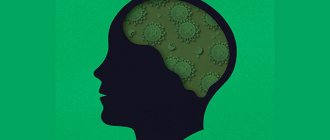Arachnophobia is an uncontrollable fear of spiders, in other words, it is a condition when the subject experiences a panicky fear of spiders, not only large and exotic ones, but also ordinary individuals common in our latitude. Arachnophobia can be caused not only by the spider itself, but even by its image.
According to studies, every fifth man suffers from arachnophobia. The rates among the female population are even higher. Individuals susceptible to arachnophobia feel discomfort in any place where spiders may be found or where there are traces of spiders (webs). Just at one glance at an arthropod, arachnophobes begin to have an acute, uncontrollable panic attack.
Types of phobias. Classification of phobias
Currently, more than 500 types of phobias have been described. The most common of these are social phobia and agoraphobia.
- Social phobia is a type of phobia that is characterized by a pronounced fear of being the center of attention of strangers, or of behaving in a way that will cause humiliation or embarrassment. This type of phobia manifests itself in social everyday situations - during a meeting with friends, lunch in a cafe, the need to speak at a meeting, and others.
- Agoraphobia is a type of phobia associated with “helplessness if things suddenly become bad.” This type of phobia manifests itself in the fear of traveling unaccompanied or being among strangers.
All other types of phobias are classified into the group of so-called isolated phobias.
Below are examples of just a few of them. Phobias of animals or insects:
- - cynophobia - fear of dogs;
- - Gatophobia - fear of cats;
- - arachnophobia - fear of spiders;
- - ophidophobia - fear of snakes.
Phobias associated with situations:
- - claustrophobia - fear of closed spaces;
- - ochlophobia - fear of crowded places;
- - monophobia - fear of being alone with oneself;
- - xenophobia - fear of foreigners, strangers.
Phobias associated with natural forces:
- - acrophobia - fear of heights;
- - nyctophobia - fear of darkness, night;
- - aquaphobia - fear of water;
- - pyrophobia - fear of fire;
- - thalassophobia - fear of the sea.
Health-related phobias:
- — odontophobia – fear of dental treatment;
- - bacillophobia - fear of microorganisms;
- - Cardiophobia - fear of cardiovascular diseases;
- - Hematophobia - fear of the sight of blood.
Phobias associated with conditions and actions:
- - stasibasiphobia - fear of an upright position and walking;
- - stasyphobia - fear of standing;
- - lalophobia - fear of speaking;
- - tremophobia - fear of trembling;
- - Basilophobia - fear of walking;
- - amaxophobia - fear of traveling in public transport.
Phobias associated with objects:
- - hyalophobia - fear of glass;
- - macrophobia - fear of large objects;
- - microphobia - fear of small objects;
- - computerphobia - fear of computers;
- - Belonephobia - fear of piercing objects.
Contact a specialist
Sign up for a consultation tel. 242-82-65
Make an appointment
Yuri Lvovich Muchnik
Psychiatrist-narcologist
Doctor of the highest category. 35 years of experience. Works at the Clinic named after. prof. F.F. Preobrazhensky since 2001
Let's sum it up
The fear of spiders is called arachnophobia. It is characterized by indescribable fear and avoidance of contact with arachnids. Today, psychological illness can be successfully treated.
Yes, spiders are not the nicest living creatures on the planet. Among them there are poisonous, fanged, hairy creatures. Although special ones can kill a person, meeting them is not a reason to tremble. To get rid of an unwanted phobia, you need to gather all your strength, go to an appointment with a psychotherapist and follow all the doctor’s recommendations.
Self-help for arachnophobia
As experience from psychiatric practice shows, arachnophobia can be treated independently, without the help of specialists. But for this you need to have desire, courage and willpower. A person must face his fear and learn to live with it. Some arachnophobes get a pet in the form of a tarantula or tarantula. Others go searching for cobwebs in their home to get to know its author better. In any case, self-help involves direct contact with the insect.
Non-traditional methods of treatment (dietary supplements, herbs, acupuncture)
Most people claim that alternative medicine and traditional methods of treatment will help overcome arachnophobia.
Acupuncture therapy is successfully used in practice in Central Asian countries. Treatment involves influencing bioactive points of the nervous system: in the back, neck, arms, head. There have been cases of healing of patients with arachnophobia after several sessions of the procedure.
Ancestors believed that plants were the cure for all diseases. Modern science does not exclude the place of plant materials in the treatment of arachnophobia. Thus, the soothing herbs motherwort, peony, and valerian are used; the antidepressant properties of St. John's wort and the tonic ginseng and eleutherococcus play a great role.
The complex drug treatment for spider phobia includes biologically active additives (BAS): tryptophan granules, vitamin preparations, tablets with magnesium and B6.
It is worth noting that self-medication does not always lead to a positive result. Moreover, without the help of specialists, the patient will not only not get rid of arachnophobia, but will also develop new “sores”.
Arachnophobia: prevention at home
If therapy answers the question of how to stop being afraid of spiders, then prevention prevents the formation of fear. Psychotherapists say that most diseases come from childhood, and arachnophobia is no exception. In this case, a large role is assigned to parents and their upbringing. Parents must ensure the normal mental and physical health of the child, monitor his behavior and reaction to animals, including insects. Having seen his fear of arthropods, they take measures to eliminate it, explain what a phobia is called, when you are afraid of spiders and why you should not be afraid of them.
Symptoms of arachnophobia
So, arachnophobia is often confused with disgust, disdain, hatred, rejection, and disgust that a person experiences when looking at an arthropod. However, the true manifestations of arachnophobia develop gradually over several years and even decades.
The main problem with the fear of spiders is that the panic state can begin quite suddenly and at any time. Just an image of an arachnid will be enough to cause panic. It is a panic attack that is dangerous to the health and life of the subject. In states where control of one’s mental manifestations is lost, disturbances in the functioning of the autonomic nervous system appear. The presence of any phobia is dangerous because, against the background of an uncontrolled panic state, a myocardial infarction or stroke can develop.
Fear of arachnids becomes a pathological manifestation of fear (arachnophobia) if the subject becomes afraid to go to a place where there may be a concentration of spiders, for example, in the basement.
The main characteristic symptoms of this phobia include:
- a feeling of fear that appears uncontrollably and a person is unable to suppress it;
- inhibition of reactions or, on the contrary, a desire to run somewhere appears;
- pallor of the epidermis;
- increased pulse and heart rate;
- panic attack, beads of sweat, tremors of the limbs;
- a feeling of unreality of what is happening;
- the desire to destroy an insect.
The desire to immediately kill an arthropod that appears in the field of vision of an individual is the first alarm bell, signaling that it is worth paying attention to his mental state and health. After the desire to destroy an arachnid at any cost, an obsession appears to find and neutralize a spider nest in your home or in the surrounding area. And the weak half of humanity begins with a manic desire to restore cleanliness and order in the house.
When carefully observing the behavioral reactions of people suffering from arachnophobia, one can notice that such behavior is learned. Its origins begin in childhood and are hidden deep in the subconscious. This is due to the fact that from childhood the child copied the behavior of the adults who were significant to him.
How to distinguish a phobia from “simple” fear
Let's look at the difference between fear and phobia using a real example.
There are a sufficient number of people who are afraid to travel in the subway. If the cause of fear is fear, it must be caused by certain negative experiences in the past. For example, a person once felt ill on the subway. If the reason is fear, then the person will prefer to move around the city by ground transport, but if the need arises, he will still go down to the metro. Naturally, this will be accompanied by certain experiences, but will be controlled by common sense and logical thinking. In the case of a phobia, the problems will be much more significant, depending on the severity of the phobia. In the mildest cases, a person will still go down to the subway, but any, even the most insignificant, stops of the car between stations will cause a pre-panic and panic state. In the most severe cases, a person will not be able to force himself to go down to the subway even in case of emergency, contrary to logic and common sense, and any attempts to force this by other people can cause severe psychological trauma. Is this relevant? According to world statistics, every eighth inhabitant of planet Earth has phobias. Thus, phobias, as a type of neurotic disorders (Neuroses, depression, fears) are a widespread phenomenon.
Doctors' advice for combating and preventing fear of spiders
As N.I. said Pirogov, the best treatment is prevention. You should not start a pathological process, but rather, prevent its formation. Psychotherapists in the case of arachnophobia adhere to the same principle.
Don't scare children with spiders
Parents are used to punishing their children for their offenses with sanctions in the form of “babes”, monsters or spiders. Should not be doing that. If a child for hooliganism receives his father’s threats about a big, evil arthropod that comes out from under his bed at night, then the child’s psyche will form the attitude: “I don’t want to explain, because I’m very afraid of spiders.”
Don't watch horror movies
Modern films are so realistic that they keep not only children but also adults awake. Don't be surprised if, after watching Harry Potter and the Chamber of Secrets in the evening, you will be woken up in the middle of the night by a child's crying associated with Hagrid's huge chitinous monster Aragog.
Be at one with nature
Fresh air, clean green forest, warm river - all this is the natural habitat of insects. While in it, you will get to know most of their representatives better and understand that they are not so scary and aggressive, but friendly and harmless.
Think logically
Don't be an elephant who is afraid of Moska's barking. Spiders are creatures that are 1000 times smaller than you. They have no need to attack a person. According to statistics, more people die each year from cow attacks than from spider bites.
Connect your creativity
Use your left brain and get creative. If you, being an arachnophobe, saw a spider on the ceiling, and it does not allow you to continue your business normally, then imagine that it is not a spider, but an ordinary ant that peacefully goes about its business.
Try to eat spiders
Of course, this method is not necessary, but in the kitchens of Central Asian and Latin countries you can find fried or baked hermit or black widow on the menu. The taste of spider meat resembles the taste of other chitinous representatives - crayfish, shrimp, crabs
Phobia concept
The concept of “phobia” is well known to everyone, but not everyone can coherently explain what exactly it is. Translated from Greek, “phobia” means “fear, fear.” In reality, fears and phobias are very close, but there are significant differences between them. Fear is a natural protective function of the body in the face of real danger, physiologically manifested in the release of hormones into the blood, rapid heartbeat, autonomic dysfunction, etc. An interesting fact can help to understand the nature of fear - a person is born absolutely fearless. Little children are not afraid of falling from a height, drowning in the bathtub, or touching fire with their finger. Only later does the feeling of fear come with experience, and, basically, these fears are useful. Basically, the feeling of such fear helps to escape from dangerous situations or prevent them. This feeling of fear is completely conscious and controlled by common sense and logic. Phobias are fears that are characterized by very significant stability, are not based on common sense (irrational) and are constantly present in the human psyche. Moreover, these fears most often are not of a real threat, but fears “within us.” Phobias, unlike fears, are very difficult to control by thinking and common sense.
Methods
You can carry out independent work, which, in combination with treatment from qualified specialists, will give more effective results, and perhaps speed up the process of recovery and release from tension.
Computer games and programs
Yes, computer games are not always about addiction; sometimes they really help a person feel better.
There are programs with the help of which the phobe interacts with the source of his horror, only in safe conditions. After all, this happens in virtual reality.
- Arachnophobia Free (iOS devices only). In the first levels, a person encounters cute, cartoonish spiders throughout his house, which he must deal with in different ways. As the tasks become more complex, their appearance also changes, becoming more realistic. And at the very end, the game background is replaced with the camera image. That is, it seems to the fob that there really is a tarantula running around in his room. This application is paid, but it is worth the money, if only because it has a healing function rather than an entertainment one. In addition, it was developed directly by psychiatrists.
- Itsy (virtual reality). The player sees funny and touching spiders in different costumes, which are becoming more and more numerous. The task is to stay in place, without running away, because these cute creatures gradually become more realistic, attacking from all sides.
Meditation
It is important to learn to relax, concentrate on your inner feelings, experiencing peace and harmony. This is not easy, given the amount of stress modern people are exposed to every day.
But it is very necessary, because the inability to relieve tension is what provokes the development of most diseases, including mental disorders.
The most effective results for achieving relaxation are shown by meditative techniques.
The site shows a lot of ways in which you can take care of your health and mental balance, just go to the “Meditation” section and you will get all the necessary information.
Now I want to introduce you to another application that will be a good help in the fight against panic attacks - Flowy.
You will learn to control and track your breathing, because this is the first thing you need to do when panic occurs in order to return to normal.
The task is to breathe simultaneously with the cloud from the game, thus controlling the boat, which in no case can be drowned. Otherwise you'll have to start all over again.
By the way, you will also be able to get statistics on how far you can progress, in which cases there are more errors, and so on.
Why are people afraid of spiders
First, let's figure out where fear grows from. After all, 50% of women and 20% of men (this is how many people, according to statistics, suffer from arachnophobia) cannot be afraid just like that.
Several reasons for this phenomenon can be identified.
- Frightening appearance. Spiders are very different from you and me. They have 6 or 8 eyes, 8 paws, and their body is covered with hairs. Everything unfamiliar and alien causes discomfort and rejection. The severity of the reaction depends on the characteristics of the individual and the structure of the nervous system. Some people have only a slight hostility, while others literally panic when meeting their eight-legged comrade.
- Behavior and method of movement also leave their mark - spiders run very quickly on smooth surfaces and can hover in the air on an invisible web. And if most insects crawl somewhere under our feet, then you can literally come face to face with a spider.
- Some types of spiders really pose a danger to humans. These include crosses, chiracantids, black widows, tarantulas and others. A tarantula bite, for example, can be fatal if antivenom is not administered. So the fear of spiders cannot be called completely groundless.
By the way, did you know that spiders are not insects? They belong to the order of arachnids, their closest relatives are mites and scorpions.











